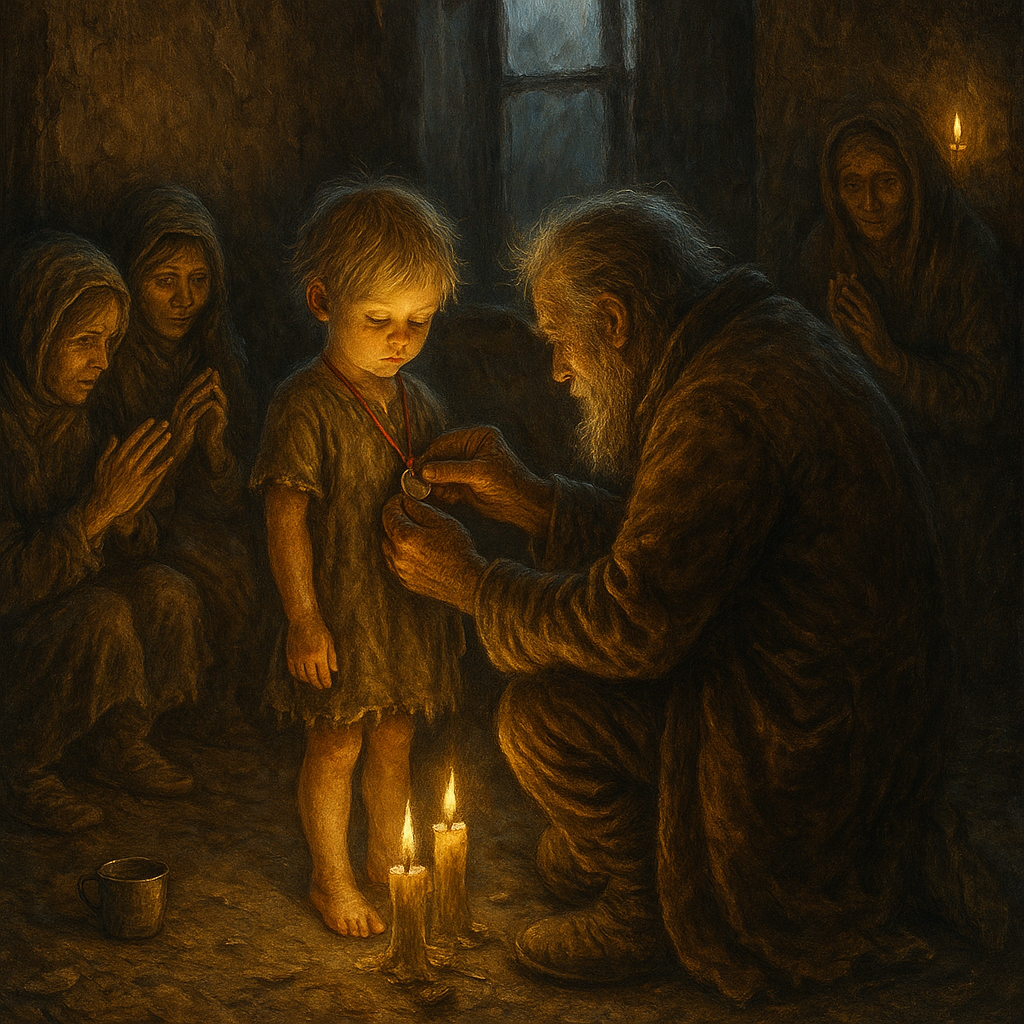Gutterung Blessings
“You can mock my ribbon all you like, but I’ve buried three sons and only one came back. The only one still wearing his.” -Yula Varn, widow of Ashpost.
The Gutterrung Blessing is a grim, beloved rite practiced among the lowborn of Opulence and other slum-bound communities across Everwealth. It marks the moment when a child first says their name aloud, a sign that their identity has 'solidified' in the eyes of spirit and shadow. In these poverty-stricken places where grief rots in the air and despair feeds unseen things, this rite is more than custom. It is protection. A cobbled-together charm of discarded metal, consecrated with spit and hearth ash, is strung around the child’s neck as a shield against soul-thieves, wraiths, and fractured Tulpas born from the concentrated agony of slum life. These talismans are worn until adulthood, or until stolen by the very forces they aim to repel.History
The Gutterrung Blessing dates back to the early Civil Age, when post-Schism slums ballooned and tales of "name-thieves" began to spread. These were whispered stories of children who stopped responding to their names or began speaking in tongues they had never learned. Some claimed the children were replaced by things woven of sorrow and mold, wandering spirits storied as drawn to the identity vacuum left by nameless poverty. Others believed dark mages used slum-born children as vessels for broken spirits. Regardless, the rite became popular across Warrens and gutter-districts as both tradition and weapon against the unseen.
Execution
When a child first speaks their name aloud, the household halts. The charm must be prepared immediately. The finder chooses their scrap, a symbol of the child’s connection to the life they were born into. The charm is blessed, stringed, and placed around the child’s neck while a simple chant is spoken, different in every household but similar in spirit. Most include the phrase “remember you are you,” or some variation. For three days, the child is not left alone. In some cases, painted soot-marks are placed above the door to prevent "reflection-bound things" from entering.
Components and tools
Each charm is made from street refuse, bent nails, bottle caps, cracked lenses, or coin fragments, all items discarded or long forgotten. They must be found, not purchased, as the item must have “lived low.” The charm is washed in soot-darkened water and blessed with spit from a blood relative (or a guardian surrogate), then wrapped in a thin string of gutter twine or burnt sinew. Some families burn a sliver of parchment bearing the child’s name over the object as an extra ward, the ashes sprinkled into the child’s shoes or food to "tether their shadow."
Participants
The central participant is always the child, ideally between two and five years of age, at the moment they first speak their full name unprompted. This moment is treated with urgency; failure to bless the child within three days is considered an invitation for dark forces. The charm is bestowed by a parent, elder sibling, or a neighborhood elder, often with a whispered mantra: “This is yours. So are you. Don’t forget it.” In cases where no family is present, community crones or midwives serve as stand-ins.
Observance
The ritual is observed on the night of the child’s self-naming, regardless of season or day. The poorest of households will cancel meals to complete it. Slum neighbors often recognize the night with shared candles placed in window cracks, a flickering network of warmth meant to dissuade ill omens from slipping into the home.



Comments